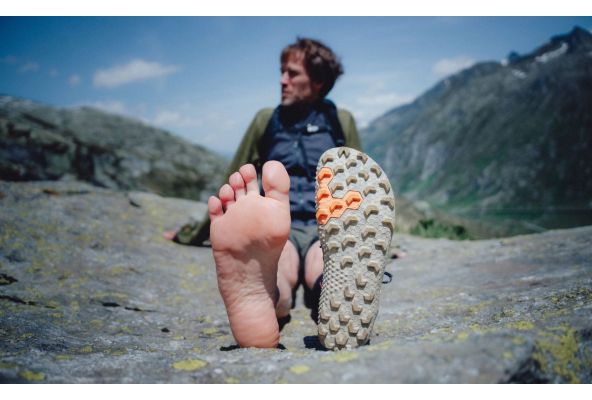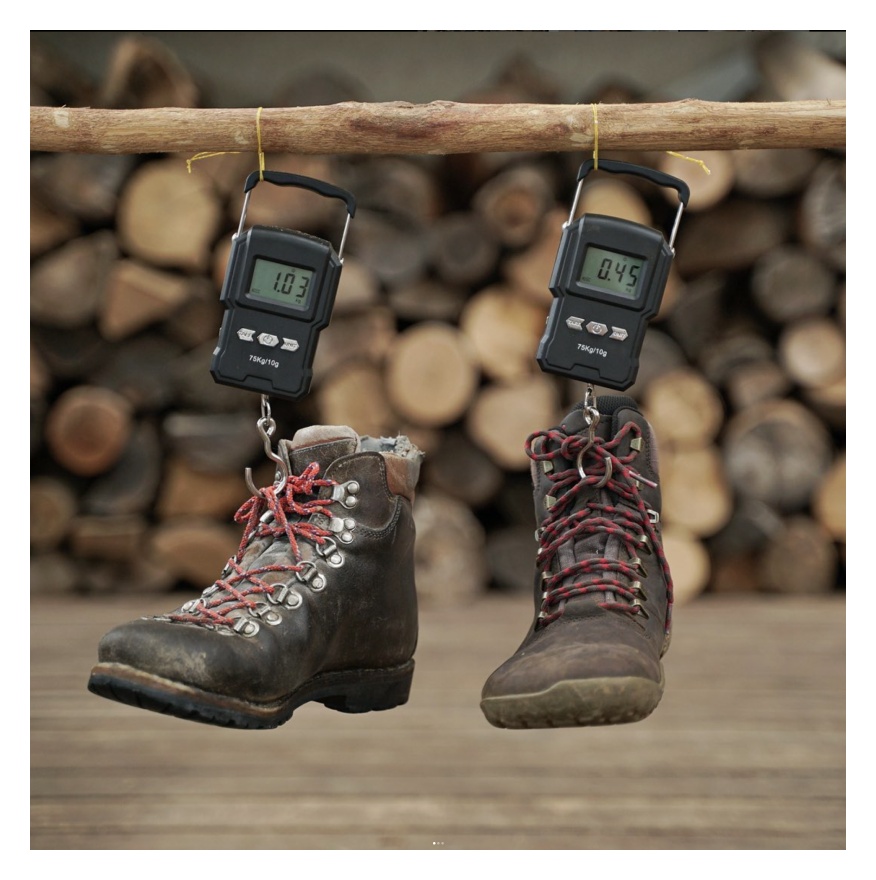It’s widely understood that proper hiking footwear is padded, rigid, and waterproof, with plentiful ankle support and thick soles. Outdoor terrain requires capable boots. Except, what if our definition of ‘capable’ has been misinformed? The adventure world has evolved from its conquest-over-connection past, and so has hiking footwear. It’s time to bust some myths.
Myth one: proper hiking footwear is padded.
Myth one: proper hiking footwear is padded
We can all agree that good hiking footwear is protective and durable. Nobody likes bashed-up feet or holes in their boots.
But this doesn’t necessarily mean padded. Humans evolved walking barefoot, giving us strong feet and tough soles. Beyond blocking sharp thorns and dulling any impact with rocks, we don’t need very much protection. Indeed, durable materials – like the wild hide leather we use – are getting much lighter and thinner.
Padding also creates a weighty problem: weight. Weight on your feet while hiking is disproportionately burdensome.
one pound on your feet equals five pounds on your back
Myth one: proper hiking footwear is padded
Myth two: proper hiking boots are rigid
Myth two: proper hiking boots are rigid
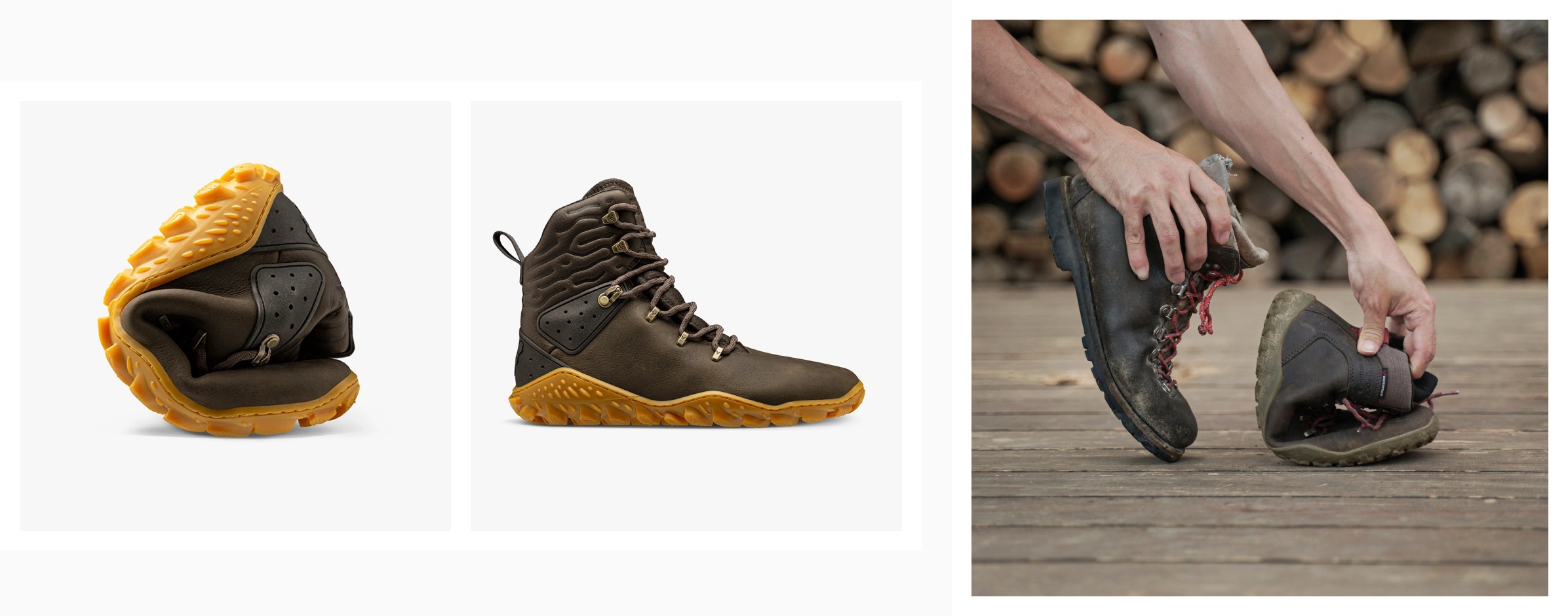

Lots of outdoor boots are stiff. This is great for skiing or high-alpine mountaineering, but generally hurts feet and dulls sensation elsewhere. Though ‘rigid’ implies strong, durable, and protective, this can be misleading when it comes to hiking boots.
Durable materials withstand impact, maintain performance, and break down slowly. Durability depends on many material properties, plus maintenance – far more than rigidity. A typical leather belt is a good example: flexible as anything, tough as … old boots.
Inflexible boots also need ‘breaking in’, which feels like a euphemism for ‘will cause blisters, discomfort, strain, and generally break your feet.’ Why not just opt for boots that are fit for purpose from step one?
Even more importantly, rigidity reduces dexterity, movement skill, and foot strength. This inhibits overall stability, even if the boots themselves feel more stable. The result? Less nature connection and a higher chance of injury. That doesn’t seem protective to us, which is why Outdoor Vivos are so flexible you can scrunch them into a ball.
And don’t worry: you can absolutely wear barefoot hiking boots in the alpine. In fact, they even give your feet space to swell up – which can happen at altitude. Not fun in tight, stiff boots!
Myth three: proper hiking boots are waterproof
Myth three: proper hiking boots are waterproof
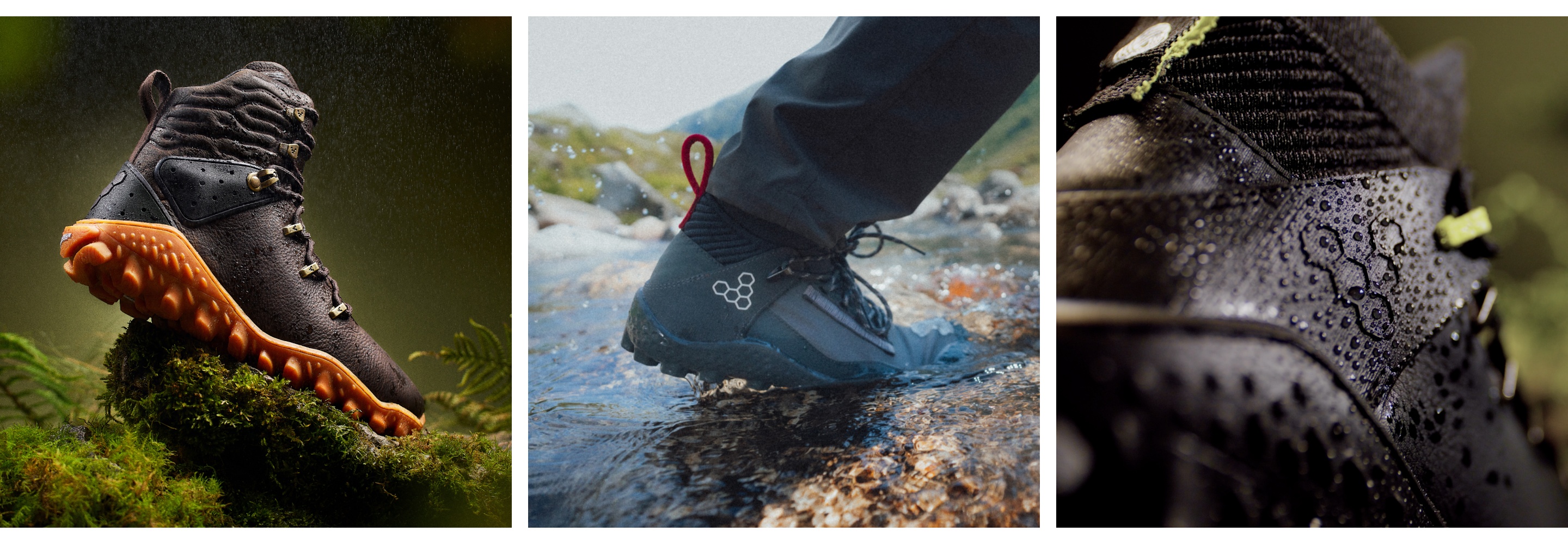

As sure as the sun rises in the east, wet feet suck. Which is why waterproof hikers may be a bad idea.
Yep, sounds ridiculous. But here’s the thing …
Many hikers wearing waterproof boots end up confused by their soggy feet. The most likely explanation isn’t membrane failure. Waterproof boots are less breathable, which makes your feet sweat more, and makes it harder for sweat (and any other unwelcome water) to evaporate. In other words, wet feet – for the long haul, because non-breathable boots take longer to dry.
What’s more, waterproof doesn’t really mean waterproof. Water can usually seep into the top of your boots, and waterproofing typically fades over time. Some water will probably penetrate at some point.
Wet feet aren’t just uncomfortable. They’re also heavier, and provide excellent conditions for blisters, fungal infections, and other skin conditions to take root.
This explains why the Tracker Forest ESC – our expedition-grade hiking boot, designed with survival experts to thrive in the planet’s wildest places – isn’t waterproof. With proper treatment, it’s highly water-resistant but also highly breathable, for more effective moisture management during deep, immersive adventures.
Don’t get us wrong: waterproof boots absolutely have a place. We make them, we like them, we wear them – especially in snowy conditions, where water can mean frostbite (check out the Tracker Winter), or for wet day hiking, where drying your boots isn’t a problem (explore the Tracker FG, or its animal-free cousin, the Tracker Textile). Proper hiking boots can be waterproof, but it depends on the context.
Myth four: proper hiking footwear has ankle support
Myth four: proper hiking footwear has ankle support
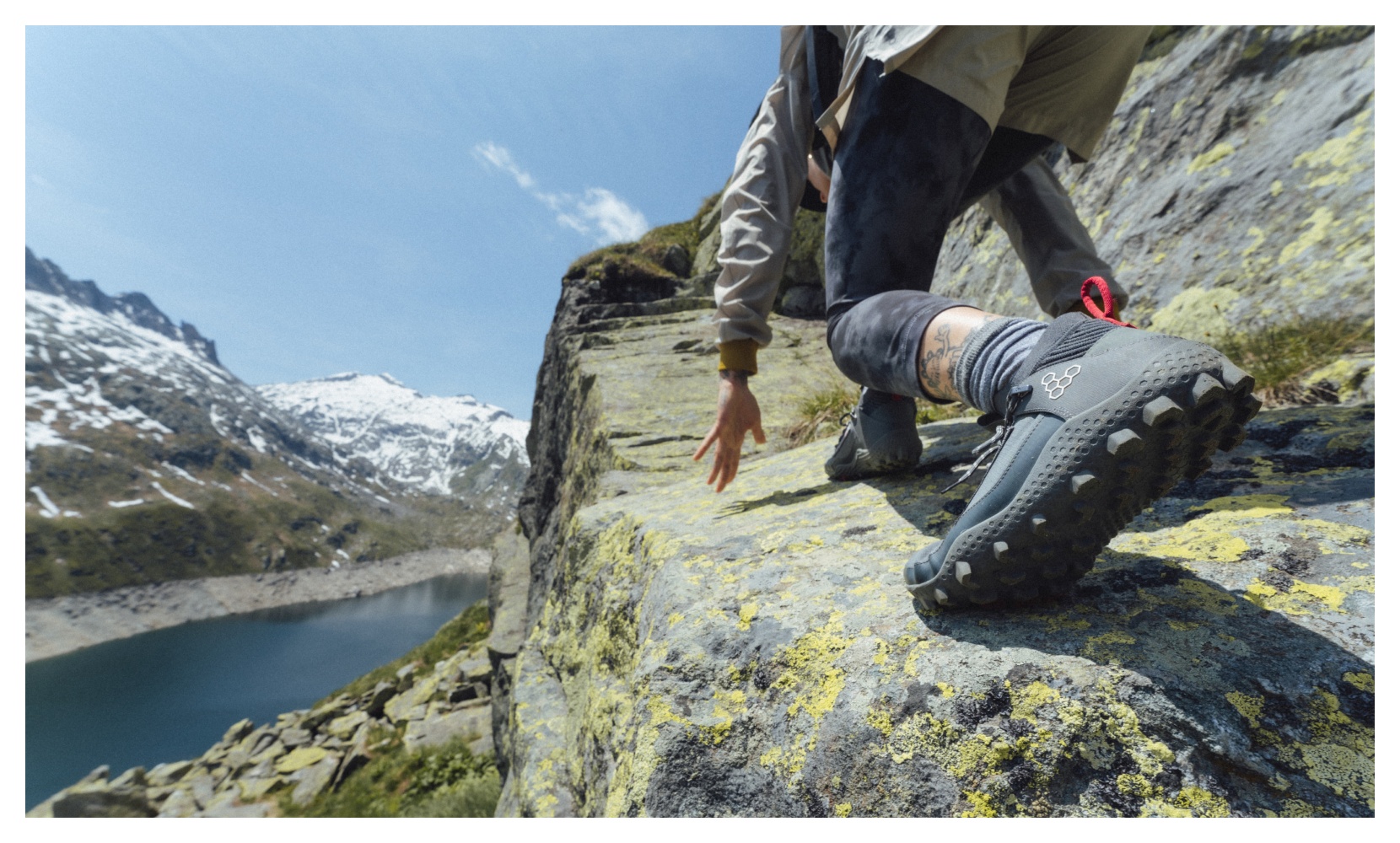

Is there a phrase more synonymous with hiking boots than ‘ankle support’?
Fear of ankle injuries is understandably top of mind for many hikers. But there isn’t clear data showing that ankle support helps.
The problem with tall stiff boots is that by immobilising your ankles they weaken them and inhibit skilful movement – undoing two excellent injury-prevention measures. Ankle support also adds weight and rigidity.
For most hikers, we recommend building strong ankles as a surer, more freeing form of protection. It’s why hiking Vivos emphasise flexibility and mobility over ankle support, and why our trail ‘runners’ are also excellent for hiking. It’s also why we created VivoHealth’s online Foot and Ankle course, to give you strong ankles in just twelve weeks.
Again, we’re not saying ankle support is always bad! Taller boots do offer extra protection from rocks and debris, and extra stability may feel helpful if you experience ankle problems. Even in this case, though, we still recommend strengthening your ankles as a preventative measure, for hiking and for life.
Myth five: proper hiking boots have thick soles
Myth five: proper hiking boots have thick soles
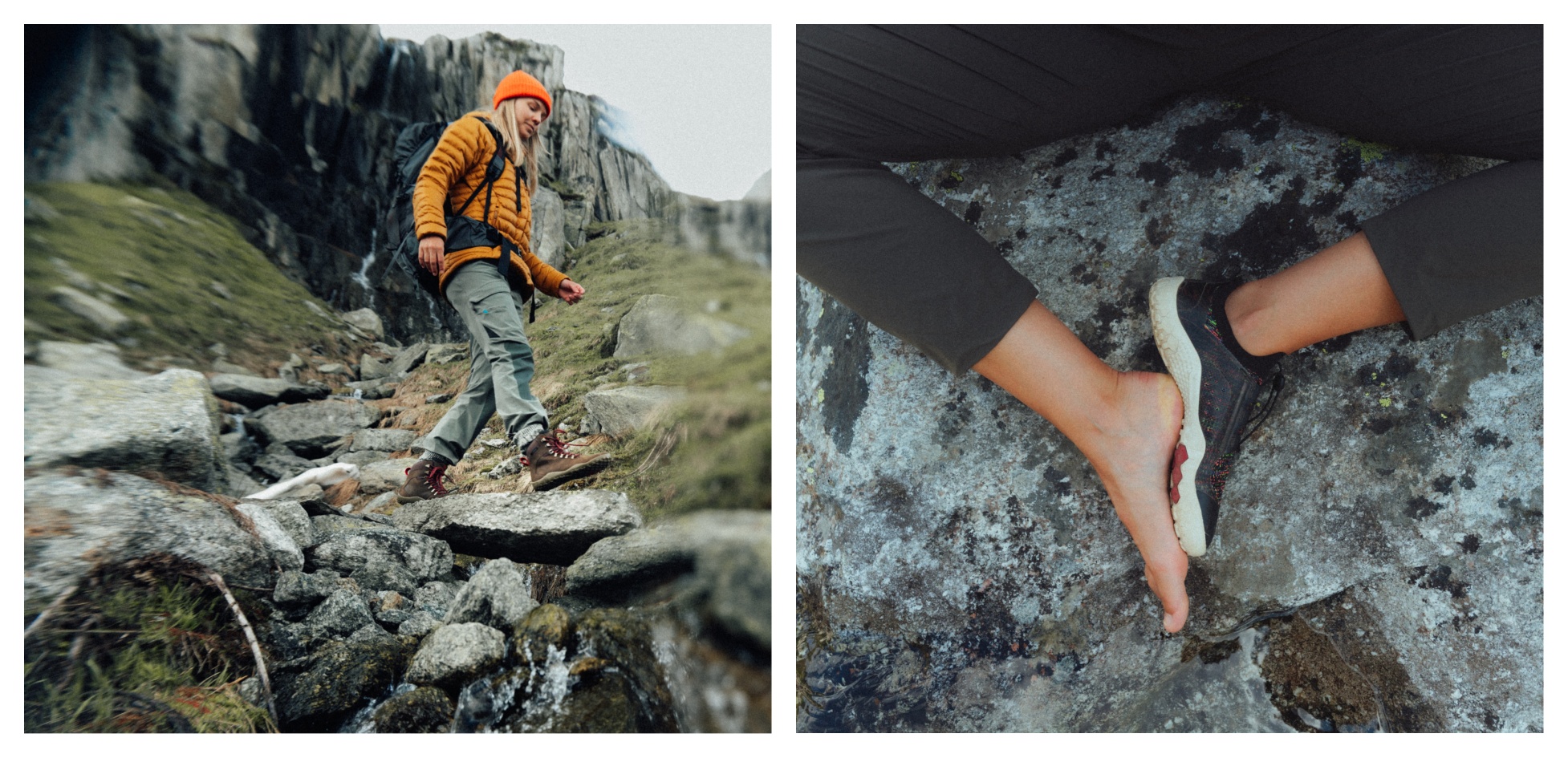

Unless you’re thru hiking a 1,000-mile bed of nails, your soles need less protection than you think. Remember, we evolved to walk literally barefoot!
It’s definitely true that thin soles may initially make your feet and soles ache more than usual. A slow, careful transition and good conditioning are important – something VivoHealth’s Barefoot Fundamentals course is perfect for.
Longer term, though, thicker soles cause problems. They inhibit ground feel and proprioception, making it harder to adjust quickly and connect with nature, and heighten your centre of gravity.
This increases the risk and severity of ankle rolls. Thick soles also mean more heel striking, which can increase impact on your knees and upper body.
....
The best hiking footwear for you depends on your body, your goals, and where you’ll be hiking. But it’s important to think beyond the traditional framework of padded, rigid, waterproof boots with ankle support and thick soles. Lighter, more flexible, water-resistant hiking boots with thin soles and scope for your ankles to grow strong may well be the kind of capability you need, with a deeper nature connection to boot.
